Commemorating the centenary of the death of Hans Thoma: 1, to 1885
Little known today outside his native Germany, Hans Thoma (1839–1924) was a prolific painter with a distinctive style, who died a century ago, on 7 November 1924. In this article, I look at his career and a small selection of his paintings up to the time that he achieved recognition around 1885, to be concluded next week marking the anniversary of his death.
Thoma was born in the Black Forest, in Germany, and started his training as a lithographer in Basel, before turning to painting ornamental clock faces. From 1859, he studied at the academy in Karlsruhe, under Johann Wilhelm Schirmer and Ludwig Des Coudres.

Autumn Tree, Wiesenthal was painted when he was still a student in Karlsruhe, in about 1862-63. It has the high chroma colours and gestural brushwork indicative of Impressionist style, at a time when Claude Monet was still painting in a tighter, realist manner.
After completing his training in 1866, Thoma moved from Karlsruhe to Basel in north-west Switzerland, then to Düsseldorf. At that time, Düsseldorf was home to one of the leading landscape painting schools in Europe, and was a significant influence on the Hudson River School in the USA, and several of its members trained there.

In Chickenfeed (1867), Thoma tackles this genre scene in a more traditional and detailed realist style.

At first sight, Thoma’s In the Sunshine (1867) appears to show an oddly flattened face, with both the woman’s eyes visible. In fact the woman’s head is shown in profile, and what seems to be her left eye is not part of her face at all. Otherwise he has combined colour contrasts with a carefully detailed landscape.
The following year he moved to Paris, where he came to admire the work of Gustave Courbet, and the Barbizon School. He returned to Germany in 1870, where he settled in Munich, then the centre of German arts, until 1876.
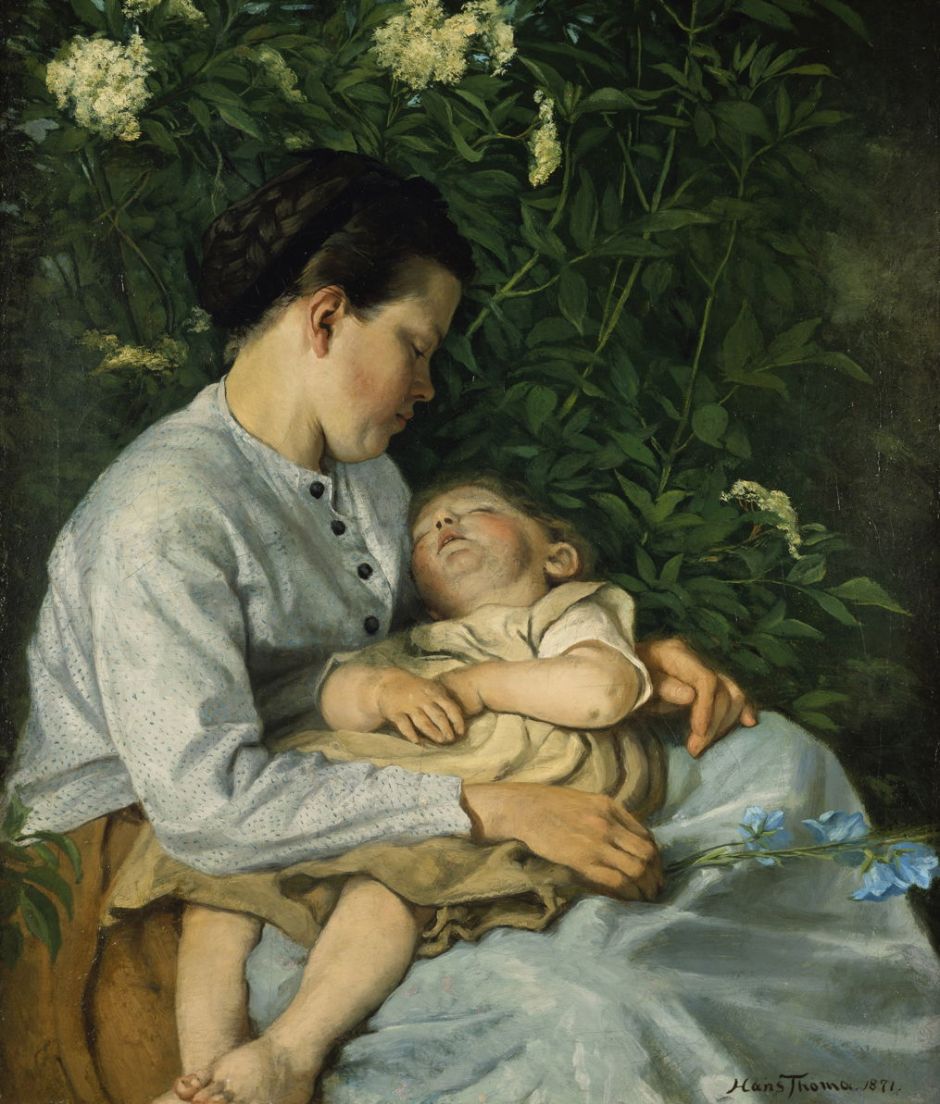
Under the Elderberry (1871) is a delightful portrait of a mother and her young child, with finely detailed hair and elder flowers. His colours are softer than before, as suits this subject.
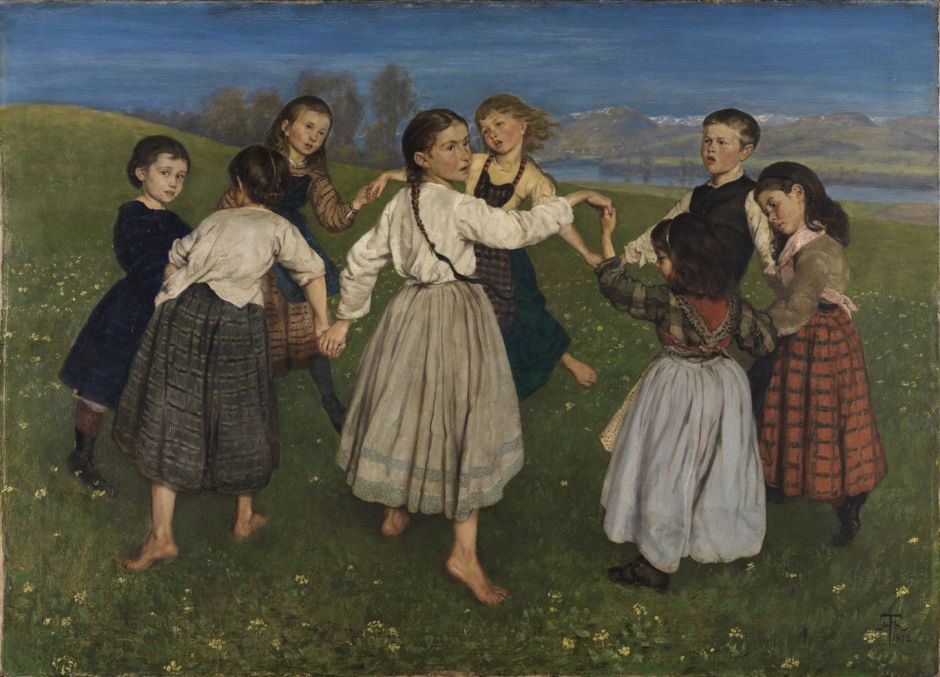
These eight Children Dancing in a Ring (1872) are set in a Bavarian alpine meadow, with pastures and high mountains in the far distance.

Thoma’s painting of two lovers in Summer from 1872 returns to a more painterly style in its flowers and vegetation. It also demonstrates his inclination towards mediaeval romance and ‘faerie’ paintings, with the chain of three winged putti in the upper right.
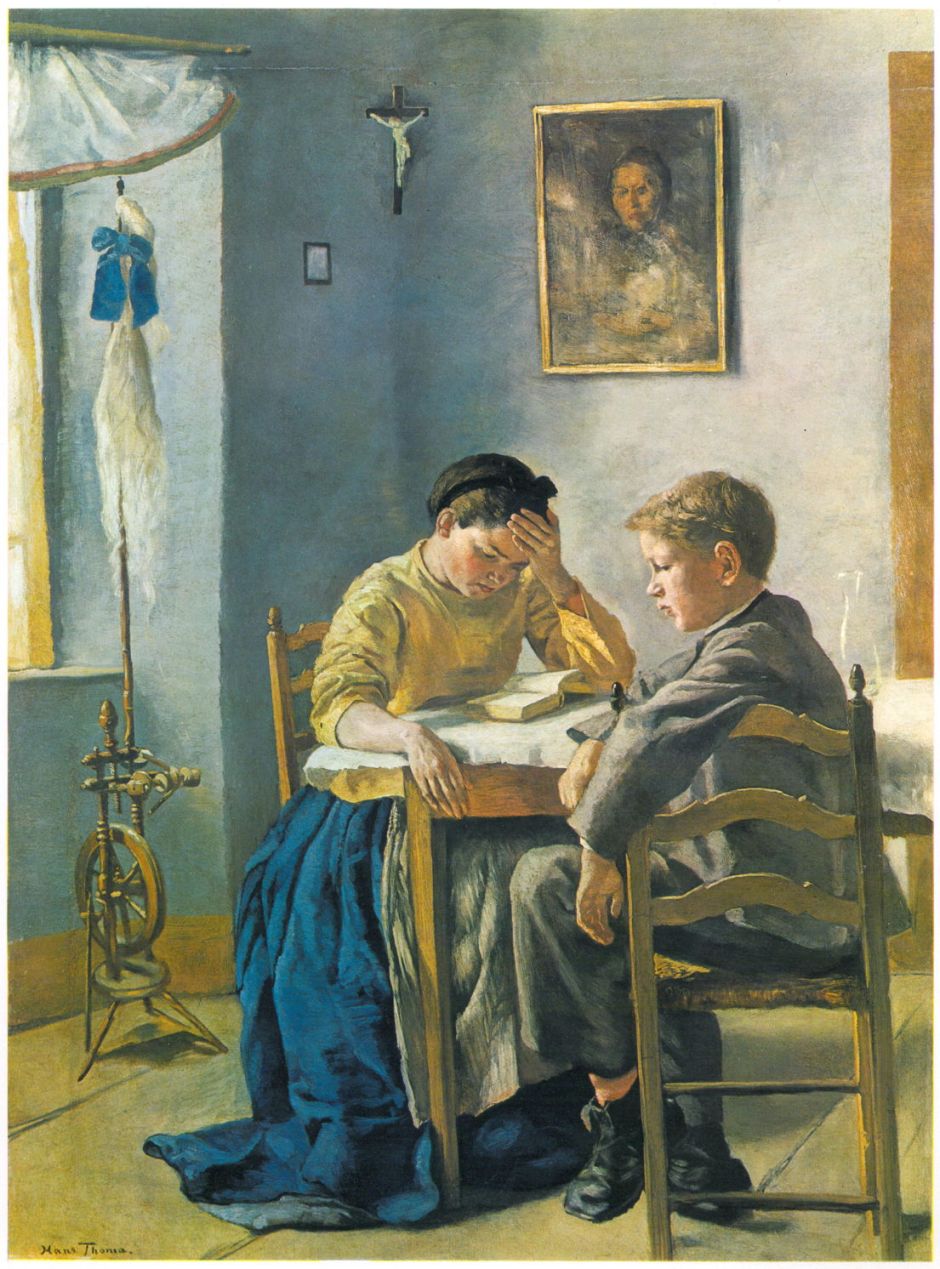
Siblings (1873) is an example of his domestic genre scenes. The brother sits disconsolate at the table, while his sister reads intently. By the window is a spinning wheel, the wool above it adorned with a blue ribbon.
In 1874, Thoma visited Italy for the first time.
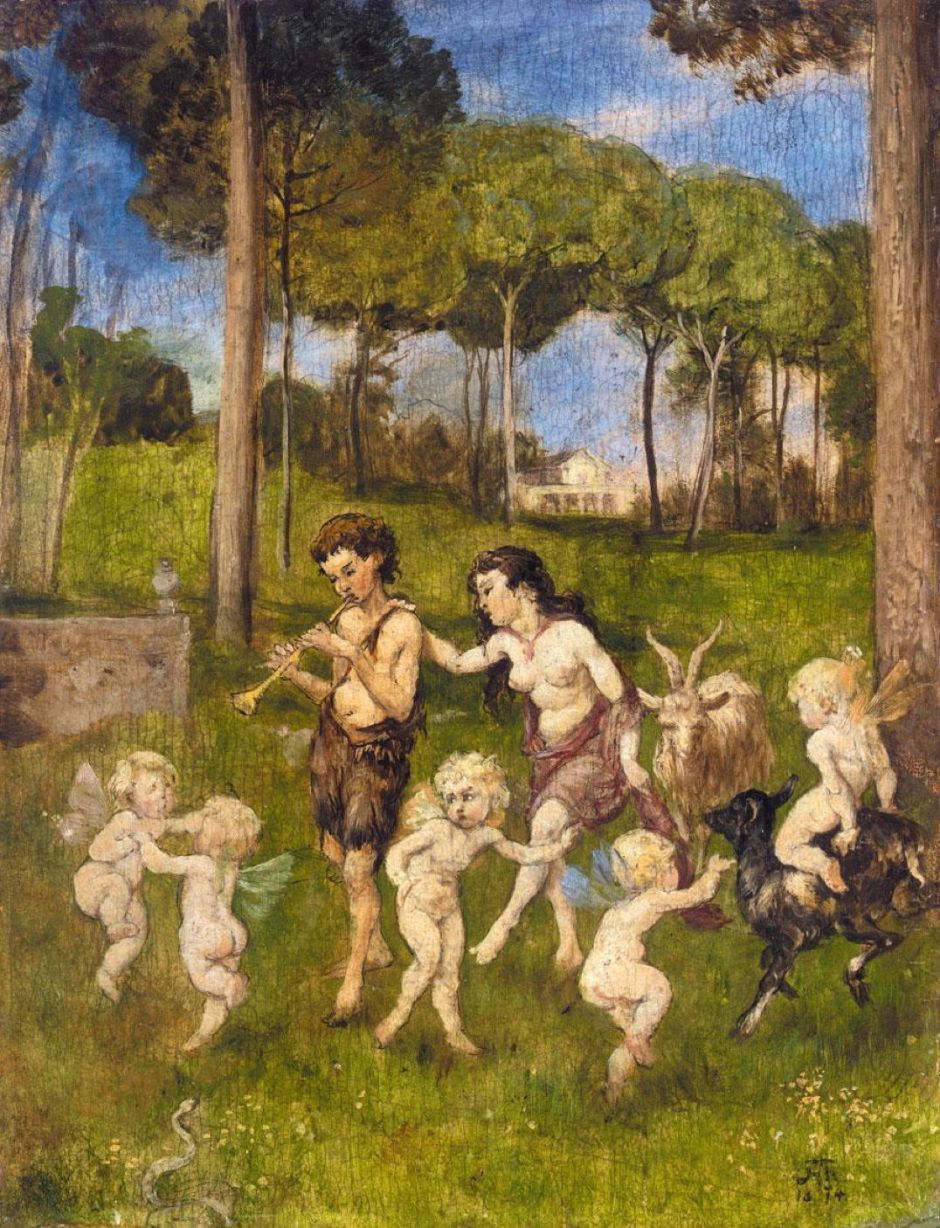
Ring dancing appears again in his Children and Putti in a Ring (1874), although now the winged putti have come down from the sky to follow a young faun-like figure and a nymph. At the bottom left is a snake threatening to disrupt the scene. As with his other mythical settings, Thoma doesn’t appear to be telling a specific story, but populates his enchanted landscape with curious creatures.
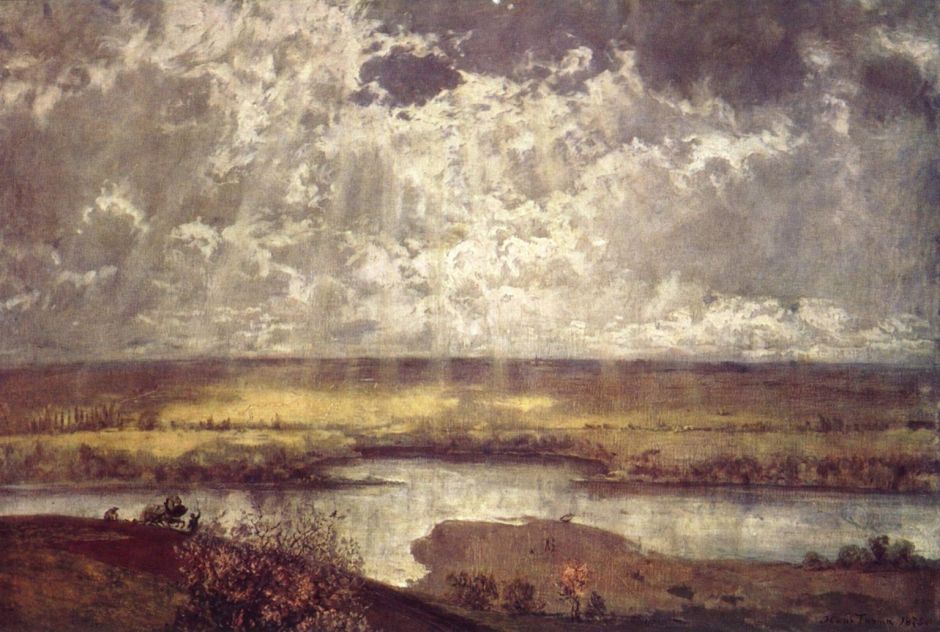
Thoma’s pure landscapes include explorations of big skies and the transient effects of light, as in his Mainebene (1875), showing the plain of the River Main lit by shafts of light. At the lower left is a team ploughing.

He handles backlighting skilfully in A Peaceful Sunday (1876). An elderly couple are sat at a plain wooden table, in their urban apartment. She works at her crochet, he reads. You can almost hear the soft, measured tick of the clock which is out of sight, slowly passing their remaining years.
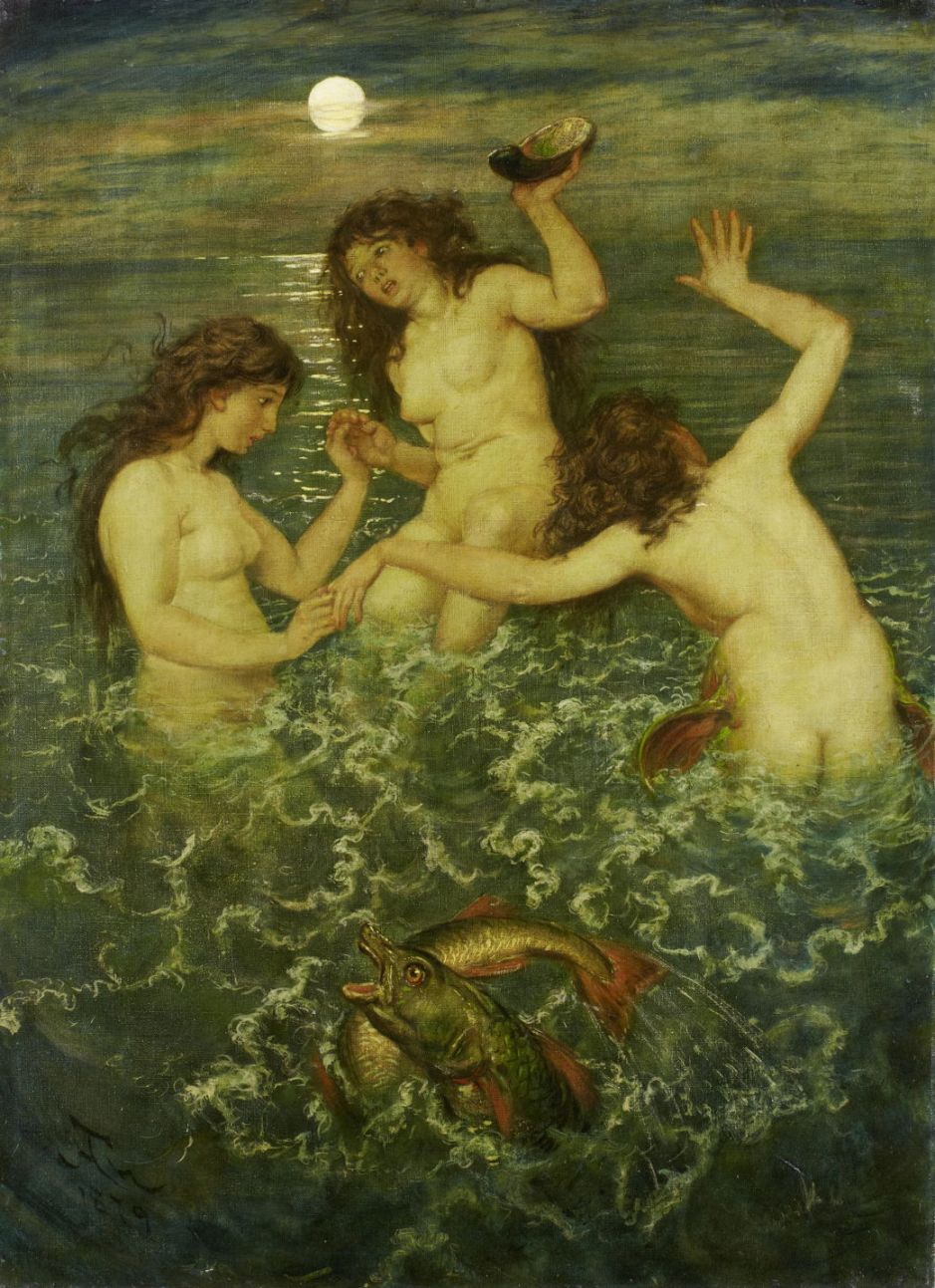
Three Mermaids (1879) is a complete contrast, with its raucous nudity and frolics with fish under the light of the moon. Thoma’s mermaids are remarkably human in form, lacking fishtails.
In 1878, Thoma moved to Frankfurt, where he was a close friend of the painter Wilhelm Steinhausen. The following year he visited Britain, and a year later returned to Italy.

As was popular during the nineteenth century, Thoma repurposed Nordic mythology with a more Germanic interpretation. The Trek of the Gods to Valhalla (1880) shows a scene that may have been inspired by Wagner’s Ring cycle, first performed at Bayreuth in 1876. This is the group of gods known as the Æsir riding across the bridge Bifröst, which is formed from a burning rainbow and reaches between Midgard (the realm of humans) and Asgard (the realm of the gods). The Æsir traditionally include Odin, Frigg, Thor, Baldr, and Týr. Recognisable on the bridge are Odin, holding his staff, with Frigg, and Thor with his hammer. At the left is probably Iðunn, holding an apple of her youth aloft. In Nordic mythology, this is an event foretold as part of the process of Ragnarök.
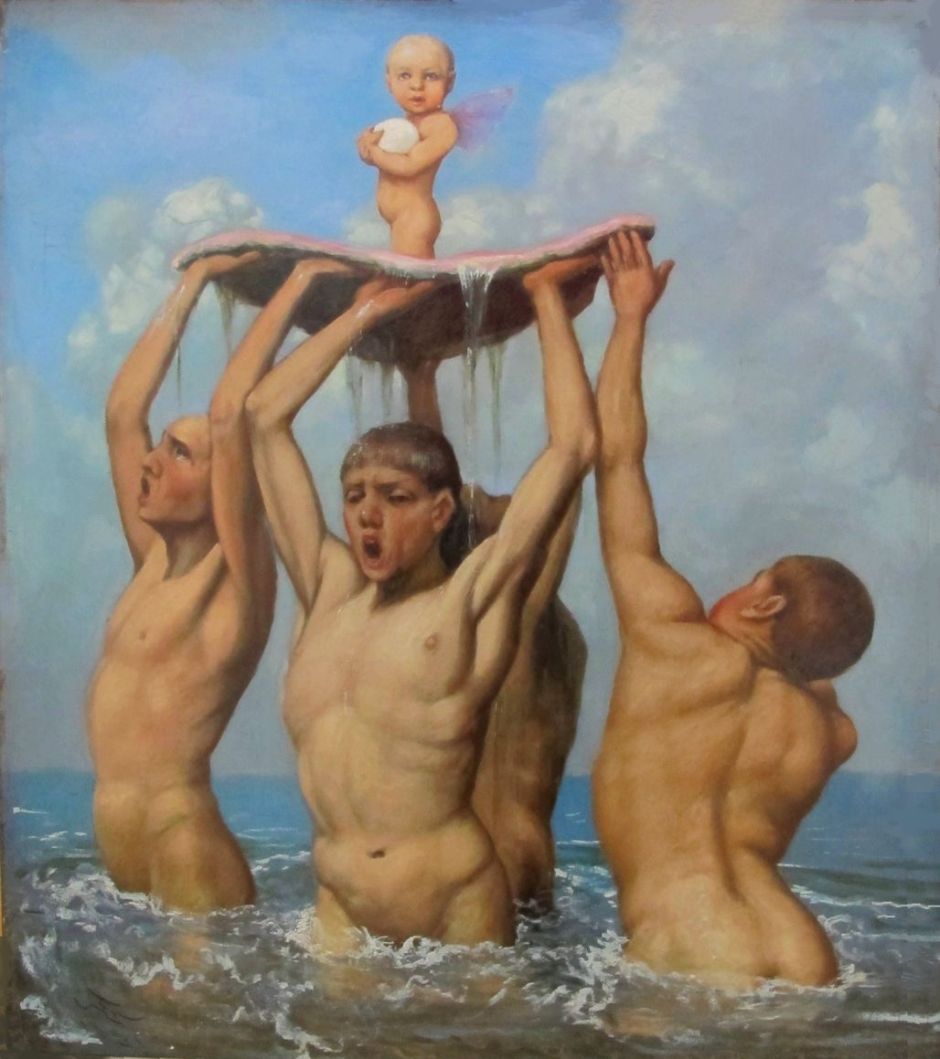
I’m not sure of the mythical background to his Sea Wonders (1881), where four boys have raised up a surface on which stands a winged putto clutching an egg. It is, nevertheless, a powerful image.

The Öd, View of Holzhausenpark in Frankfurt am Main (1883) shows what is perhaps better-known as Adolph-von-Holzhausen Park, which started as the larger Holzhausen Oed in around 1552, and became a public park in 1912-13. The prominent white building is its distinctive moated baroque summer residence.
Reference
Wikipedia (in German).